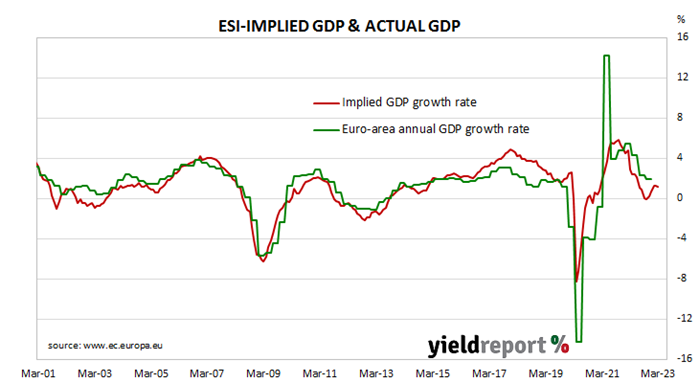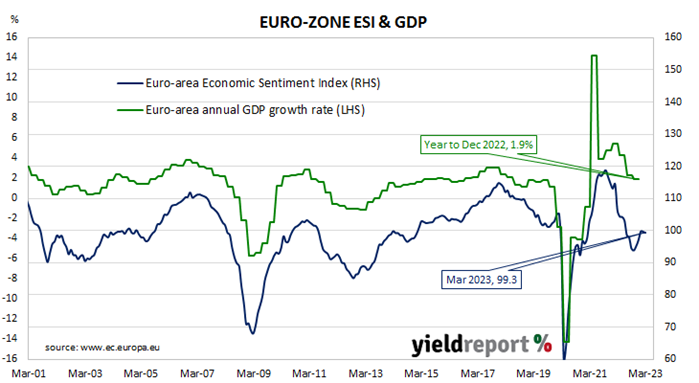Summary: Euro-zone composite sentiment index down in March, below expectations; readings down in all five sectors; up in two of four largest euro-zone economies; German, French 10-year yields moderately higher; index implies annual GDP growth rate of 1.2%.
The European Commission’s Economic Sentiment Indicator (ESI) is a composite index comprising five differently weighted sectoral confidence indicators. It is heavily weighted towards confidence surveys from the business sector, with the consumer confidence sub-index only accounting for 20% of the ESI. However, it has a good relationship with euro-zone GDP, although not necessarily as a leading indicator.
The ESI posted a reading of 99.3 in March, below the consensus expectation of 99.8 as well as February’s revised reading of 99.6. The average reading since 1985 is just under 100.
German and French 10-year bond yields finished the day moderately higher. By the close of business, the German 10-year bund yield had gained 6bps to 2.37% while the French 10-year OAT yield finished 4bps higher at 2.87%.
Confidence declined in all five sectors of the economy. On a geographical basis, the ESI increased in two of the euro-zone’s four largest economies, Italy and France, and remained broadly unchanged in the other two, Spain and Germany.
End-of-quarter ESI readings and annual euro-zone GDP growth rates are highly correlated. This latest reading corresponds to a year-to-March GDP growth rate of 1.2%, down from February’s implied growth rate of 1.3%.



